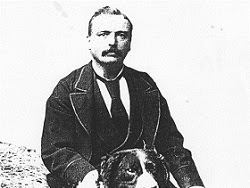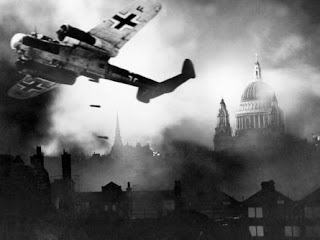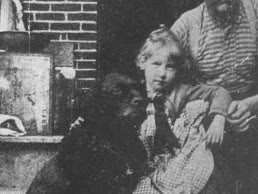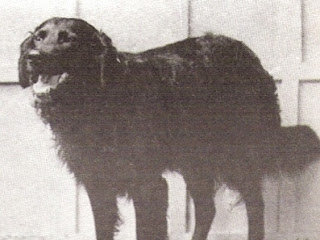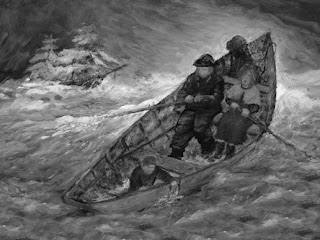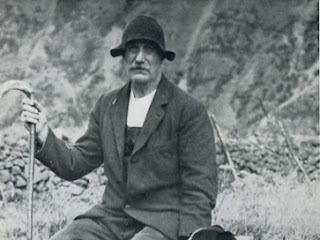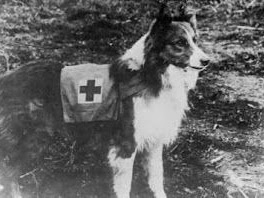Nelson, a Newfoundland, inspired the Australian folk band The Bastard Children to write a song about his heroic act in the 1880s.
 |
| Nelson and Bill Higginbotham |
Nelson's heroic act occurred on November 15, 1881 when a cabman named Thomas Brown was swept away by flood waters in Melbourne, Australia. According to the Melbourne Herald in 1931 (50 years after the event), "Close to the gutter, which was a torrent five feet deep, seething to a culvert 50 yards down the hill, a cabman was trying to keep his horse still while waiting for his passengers. At length he clambered down to quieten the beast, and at that moment it tossed its head and knocked him insensible into the gutter. In a moment he was being swept down toward the culvert."
William John (Bill) Higginbotham and his dog Nelson heard Brown's cries for help. By nature, Newfoundlands are water dogs. Their muscular build, thick double coat and webbed feet make them excellent swimmers in rough conditions. Nelson jumped into the stream and caught hold of Brown's clothing. Because of the force of the water, the dog could not keep his grip and Brown swept quickly down the block. This happened a few more times before Nelson, Bill and another man were able to haul Brown out of the water. The cabman's clothes were badly torn, believed to be a result from Nelson's efforts to catch hold of him.
Nelson was presented with a silver dog collar for his heroism. According to Bill's son Charles, "Nelson never fully recovered from the effects of the choking struggle in the culvert, although he was able to take part in the annual procession of the Albion Fire Brigade six months later, and half the city turned out to see him presented with a silver collar for his part in the rescue." The collar can be found in the National Museum of Australia.

